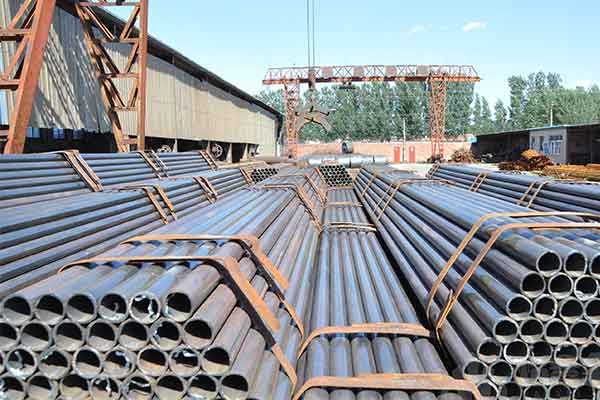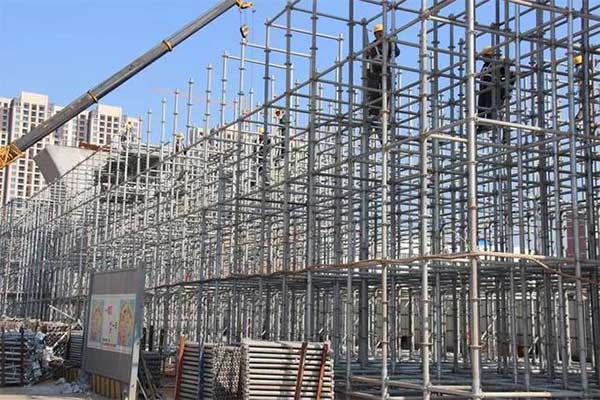What is the Standard Tube for Scaffolding?
Scaffolding plays a critical role in construction, offering a safe and stable platform for workers at elevated heights. One of the essential components of any scaffolding system is the scaffolding tube, which provides the structural backbone of the framework. But what exactly constitutes a “standard tube” for scaffolding? Let’s explore the specifications, materials, and considerations that define it.

Key Specifications of a Standard Scaffolding Tube
1. Material Composition
Scaffolding tubes are typically made from:
- Steel: Known for its strength and durability, steel tubes are commonly hot-dip galvanized to resist corrosion, ensuring a longer lifespan in outdoor environments.
- Aluminum: Lightweight yet strong, aluminum tubes are easier to handle but may not support as much weight as steel.
2. Standard Dimensions
The most widely recognized standard for scaffolding tubes is set by organizations like BS EN 39 (for steel tubes) and BS EN 74-1 (for fittings). Here are the typical specifications:
- Diameter: 48.3 mm (1.9 inches)
- Wall Thickness: 3.2 mm for heavy-duty use or 4 mm for higher load-bearing capacity
- Length: Commonly available in sizes ranging from 6 to 20 feet, depending on project requirements.
3. Weight
Standard steel scaffolding tubes weigh approximately 4.4 kilograms per meter, ensuring they are robust enough for heavy construction applications.
4. Load Capacity
The load-bearing capacity of a scaffolding tube depends on factors such as material type, thickness, and length. High-quality steel tubes can typically support up to 6.25 kN/m² when used in a properly designed scaffold system.

Compliance and Certifications
Standard scaffolding tubes must adhere to global or regional safety standards to ensure reliability:
- BS EN 39: Governs steel scaffolding tubes in Europe.
- ANSI/SSFI SC100: A U.S. standard for scaffold structures.
- Australian Standards AS/NZS 1576.2: Covers scaffolding components in Oceania.
Choosing tubes certified to these standards guarantees compliance with safety regulations and ensures the tubes meet structural requirements for various construction scenarios.
Types of Scaffolding Tubes
- Single Scaffolding Tubes: Used in traditional scaffolding systems, these tubes support platforms along building facades.
- Double Scaffolding Tubes: Common in stone masonry work, where extra support is needed to hold the structure against the wall.
- Ringlock Scaffolding Tubes: These modern tubes incorporate locking mechanisms for faster assembly and increased versatility, ideal for large-scale or complex projects.
- Cuplock Scaffolding Tubes: Featuring cup-shaped nodes, these tubes simplify connections for speedier setups and dismantling.

Why Standardization Matters
Using standard scaffolding tubes ensures:
- Uniformity: Easier assembly and compatibility with different scaffolding systems.
- Safety: Certified tubes meet strength and durability requirements, reducing the risk of accidents.
- Cost-Effectiveness: Standardized tubes are widely available, often at competitive prices.
How to Select the Right Scaffolding Tube
When choosing scaffolding tubes, consider:
- Project Requirements: Heavy-duty or lightweight? Indoor or outdoor?
- Weather Conditions: Galvanized steel resists rust in humid or rainy environments.
- Supplier Reputation: Ensure your supplier offers certified and quality-tested tubes.
Conclusion
The standard tube for scaffolding is defined by its material, dimensions, and adherence to safety standards. These tubes form the foundation of a reliable scaffolding system, ensuring worker safety and structural integrity on construction sites.
Looking for certified scaffolding tubes? Our company specializes in scaffolding products and offers a wide range of standard tubes to meet your project needs. Contact us today for more information!
